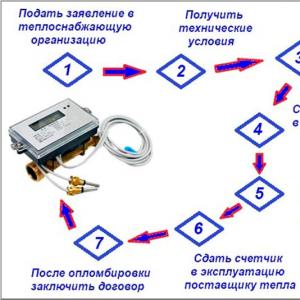How to lay laminate flooring step by step. How to dock laminate between rooms: docking methods, installation process using a threshold How to lay laminate in an apartment without thresholds
Laminate is an excellent finishing material that is used to create a strong and durable floor. It is highly valued and considered one of the most common in our area. Its feature is ease of installation, which even a beginner can handle, in an acceptable cost, long service life and excellent appearance. If we talk about styling, then this process is not complicated, however, there are several ways how you can perform it. One of them is laying laminate without thresholds. This trend is fairly new, but has many benefits.
If you use this technology, the room seems more spacious, and the floor is monolithic. In addition, the risk of tripping and falling is reduced, which is convenient if elderly people live in an apartment or house. How is such work done? How does it differ from classic styling? We will consider all the subtleties and features of laying a laminate.
What is laying laminate without thresholds
Before we get started, let's take a look at what it is. The phrase “without thresholds” itself indicates that the laid floor will not have differences in height. According to the terminology, this is a multi-layer flooring created in several rooms. It is monolithic, has no gaps and cuts in the doorway, regardless of its width. What is the purpose of this laminate laying technology? It carries only a decorative character in order to create an original design of a house or apartment. A single space is created from the laminate, the room does not have pronounced zones.

It is noteworthy that none of the manufacturers of multilayer laminate recommends using this technology. Why? It's all about the properties of the laminate. It is made from wood. And its peculiarity is that under the influence of temperature and humidity, it begins to change its size, expand and contract. How it works? For example, in autumn, when it is damp and humid outside, the laminate absorbs this moisture. Depending on the species, it has a water absorption coefficient of 4 to 18%. Accordingly, the material begins to expand. Along each panel increases more than across. That is why gaps are left around the perimeter for expansion, which are approximately 1 mm. As a result, even when expanding, the floor surface remains smooth, solid, without bumps and areas that will hold together.
In winter, when the heating period is in full swing, the reaction is reversed. Laminate laid on the floor begins to dry out as the air humidity is low. Accordingly, the material is reduced in size. If you lay the panels incorrectly and do not adhere to the technology, then fences form between them. The locks are weakening and not doing their job well.

- There is a risk that the floor will fail during seasonal temperature fluctuations, it will begin to swell, creak, gaps and other defects will appear. That is why laying laminate with the method without a threshold is suitable for processing rooms with a size of 50 m 2 and more, and a length of 8-10 cm. If the room is larger, then all these problems cannot be avoided.
- It will be difficult for beginners to implement everything in life. For work, certain skills and abilities are needed, and more time will be required. After all, it is much easier to make one room first, then another, etc.
- The repairability of the coating will be low. If one or more panels are damaged, they will need to be replaced. This is difficult to do, as you will need to remove the entire coating.
The note! The larger the area that needs to be treated, the higher the likelihood of damage to the laminate floor and its swelling. The method is good for small spaces.
Nevertheless, this does not stop thousands of users who are ready to get a perfectly even coating, without seams, beautiful and original. Before starting work, you should learn the theory of installing a laminate without seams, and choose a method for fixing it.
Panel fixing options
The easiest way is to install the laminate with glue. The whole principle is to apply the composition on the panels, after which the boards are securely glued to each other. This installation method has its advantages:
- an excellent option for buildings in which humidity is high, as well as for heavily polluted;
- joints are protected and sealed.

As a result, neither moisture, nor debris, nor dust will penetrate inside and accumulate in the joints. It's pretty practical. However, the method has one drawback - gluing is a serious process. This means that it will be impossible to dismantle the laminate flooring (replace one of the damaged panels). Therefore, mistakes cannot be made during work. One wrong move and the job will go down the drain.
The second way is fastening by means of a system of locks. This is the classic version. For this purpose, a special laminate with a similar docking system is needed. There are many advantages to this type of installation:
- In this case, you can fit the boards more accurately.
- It becomes possible to lay each panel in a different direction. Great for flooring installation.
- If one of the panels is damaged, then you can quickly and easily dismantle a certain area.
- For beginners, this is the best option, as it is simple.
- The last advantage is speed.

The only drawback of the method is the cost of a laminate with a locking method of fastening. It is slightly higher than normal. Having decided on the fixing method, it is important to choose the right laminate so that the work is not done in vain.
Laminate class
There are different types of this wood flooring. Classification depends on what load will be on the floor. In order not to make a mistake and choose the right class of products, you should consider in more detail the features of each of them and the scope of their destination. The following table will help us with this.
Load on a laminate floor | Laminate classification |
Residential premises: | |
low loads | |
average loads | |
high loads | |
Public premises: | |
low loads | |
average loads | |
high loads | |
very high loads | |
Production type premises: | |
low loads | |
average loads | |
high loads |
Based on the table, there is a pattern that the greater the load that is on the surface, the higher the laminate class is needed. It is more stable, can withstand heavy loads and other influences. Interroom laying of laminate, as experts advise, should be carried out with class 33 or 34 laminate. It is very wear-resistant, and if you follow the laying technology, then no swelling will occur. The service life of a laminate floor will be more than 20 years. The labor costs are worth it.
Preparation of materials and tools
It is impossible to do everything correctly and according to technology without the right tool. The first thing you need is a hacksaw with fine teeth, a jigsaw and a level. They can be customized to fit the laminate. For a complete set, you need a tape measure and a marker.

On sale there are whole specialized kits for laying laminate. What do they include? It:
- wedges for proper laying made of plastic;
- a tool used to cut planks.
The set can be seen in this photo.

But, in order not to spend extra money, the elements can be replaced with improvised means. For example, laminate trimmings can act as wedges. But, this is not all that is needed for work. Laying laminate between rooms should be done on a prepared floor. For this you need to have:
- Waterproofing material (you can take a plastic film).
- Thermal insulation material (polyethylene foam).
- Grout for seams.
As for the heat-insulating material, it is usually needed for country houses. Now you can start preparing the floor.
Floor arrangement
First you need to remove the old coating, if any. It is important to remember that the more accurately and accurately it is performed, the easier it will be to level the surface. After all, the main requirement for laying laminate flooring is a perfectly flat surface. When dismantling is completed, it is required to evaluate the subfloor. If the damage on it is small, then it is enough to get by with cosmetic alignment. It includes sealing cracks, irregularities and defects with cement mortar. In the case when the floor is uneven and badly damaged, you will have to make a new cement screed.

When the floor is even, you can determine the place from which the laying of the material will begin and where it will end. What is it for? An underlayment layer is laid under the laminate. It must be laid across the panels. This takes into account that the strips of the substrate are joined to each other with an overlap of 10 cm.
If the laying of the laminate is carried out in private houses, it is required to make two layers: hydro- and heat-insulating. This is done immediately in all rooms. It is important and correct to choose the lining material, its thickness, because if it is insufficient, then the waterproofing properties are lost.

And if it is thick, then the surface will subsequently be deformed. For more information on how to choose a material, see this video:
Features of laying laminate without thresholds
The laying process itself is simple, but there are a few nuances that need to be considered. They are the following:

Do not forget that laying boards close to the walls is not allowed. It is important to create a gap of 1 cm to allow the tree to move with temperature fluctuations. That is why you need to install restrictive pegs between the floor and walls. And since we are talking about laying a laminate without a threshold, the gap increases to 1.5 cm.
Note! Often the bathroom or kitchen is tiled. She is placed on the floor. How, then, to make a junction of laminate and tiles without a threshold? To do this, the board is carefully cut to size, and after the joint is processed with mastic or grout for joints.

So, let's take a closer look at the instructions for creating a laminate flooring without thresholds.
Stages of work
Knowing the technology, you can do the job quickly and correctly. The coating will be seamless and beautiful. The whole process consists of several stages, which we will consider in more detail.
Preparatory stage
The subfloor is being levelled. The differences should not reach 3-5 mm. It is worth noting that if a concrete screed was used during work, you will need to wait until it is completely dry and stronger. You can resume work after a month. The output should be a smooth, clean and dry coating.
Laying insulation under laminate
The process is simple. Step-by-step instruction:

Laminate installation
The further process is carried out as a normal laying of a laminate. The only difficulty is that the coating must be monolithic, no threshold is made in the doorways. Work starts from the window, according to the instructions above.

Since a compensation gap of 1-1.5 cm remains near the walls, it will be visible and spoil the whole appearance. In this case, it is hidden by means of a plinth attached to the wall. Particular attention should be paid to the parts near the door frames. To make it breathe, you need to lay the panels under the box. Therefore, a small cut is made in the lower part, where the panels are inserted. The elements of the combined rooms are laid in one direction so that everything looks like a single canvas.
Advice! To simplify the installation process of the laminate, it is recommended to remove the interior doors.
That's all, the work on laying the laminate is completed. Thanks to this, you can get a beautiful and durable coating. And to make it easier for you to work with laminate, you can check out this video.
Conclusion
Laying laminate without thresholds is a great way to make the room original, spacious and beautiful. In addition, the method is good if the elderly or children live in the room. Thresholds will not interfere with progress and contribute to injuries. Laminate is ideal for this purpose. If you do the installation correctly, then there is no doubt that it will not be necessary to repair the laminate for more than 20 years.
Non-threshold laminate flooring is one of the options for finishing the floor in adjacent rooms connected by doorways. Benefits of installing laminate flooring without joints:
- neat appearance of the floor in the doorway;
- visual expansion of space in the room;
- lack of zoning in a studio apartment;
- a higher level of security when moving between rooms;
- convenience during cleaning.
But, choosing this method of installing a laminate, you need to take into account the fact that all its manufacturers do not recommend laying this type of flooring with a single sheet without joints in several rooms. This is due to the fact that the material is based on wood fibers, which have a tendency to change linear dimensions under the influence of moisture and changes in air temperature in the room. The larger the floor area, the more likely it is to bulge. The joints are at the same time expansion joints that prevent unpleasant consequences.
Other disadvantages of the seamless method of doing laminate flooring work:
- if it becomes necessary to replace one of the boards, you have to sort out the entire floor;
- slightly more material consumption;
- installation will take more time;
- it is advisable to entrust the work to an experienced specialist, which means that the cost of finishing the floor will increase significantly.
Important! Installation of laminate without joints over a large area automatically voids the warranty on the purchased material, as it is a direct violation of the installation instructions.
If you definitely want to avoid the installation of protruding elements between rooms, but at the same time there is no desire to take risks by laying the laminate flooring in a continuous web over a large area, then you can join the laminate without a threshold with tiles.

Rules for performing non-threshold laying of laminate
The junction of laminate and laminate without installing a threshold can be performed if certain conditions are met:
- It is not recommended to use the seamless method of laying laminate on an area of more than 50 square meters. m.
- It is strictly forbidden to lay this type of flooring without joints on an area of more than 120 square meters. m.
- Finishing the floor with laminate without a threshold in rooms with high humidity is not recommended.
- The stock of material with a non-threshold laying method should be at least 10-12%.
- The height difference of the base of the floor in the area of the doorway for laying the laminate without a joint should be no more than 3-5 mm.
- Before deciding on this method of flooring installation, it is necessary to carefully measure the door leaf and the distance from it to the subfloor (the base for the laminate). It will be necessary to calculate the height of the finished floor, taking into account the thickness of the laminate. After installation, the gap between the door leaf and the floor covering must be at least 1 cm. This is necessary so that the door opens freely and does not touch the floor.
- You need to start laying laminate flooring from the largest room from the corner to the doorway.
Important! For a correct calculation of the required amount of material and more convenient work, it is recommended to follow the layout of the panels.

Rules for performing work on the installation of a non-threshold joint of laminate with tiles:
- This method of combining two types of flooring is suitable for zoning a large kitchen-dining room (the floor in the kitchen area is tiled, and in the dining area - with laminate).
- The thickness of both materials must match. In this case, it is necessary to take into account the thickness of the substrate under the laminate and the adhesive layer under the tile.
- The gap between different materials should be minimal.
- A non-threshold connection is especially recommended for a curved joint.
Choice of laminate
Laminate, joined without seams, must be water or moisture resistant. These types of laminate flooring are less susceptible to warping when exposed to moisture (especially water resistant), which will help reduce the risk of blistering.
According to the method of joining parts, a laminate with adhesive and lock fastening (Lock or Click) is distinguished. The adhesive significantly enhances the protection of the flooring from moisture due to the fact that it seals the joints between the panels. Therefore, in order to lay a laminate without thresholds, it is better to give preference to this particular method. But, when choosing it, you need to understand that a laminate floor bonded with an adhesive method cannot be dismantled, unlike a floor laid by a locking method without attachment to the base.
Lock and Click laminate joints differ from each other in the sequence of installation work. Panels of the first type are laid sequentially one at a time, and the second - immediately in whole rows. This must be taken into account when laying out the coating along the doorways. Rows may be too long. It is impossible to lay out panels with Click-type fasteners in narrow places, including in the opening, without additional devices. Connecting them, use a bracket. One end is inserted into the seam, and the other end is lightly hit with a hammer several times.
Substrate
For laying laminate, including without joints, you will definitely need a substrate. It can be purchased at the same time as the flooring. Types of substrate for laminate flooring:
- polyethylene foam - additionally performs the functions of heat, sound and waterproofing, the most affordable option, but quickly sags;
- polystyrene foam - inexpensive, has a good degree of sound insulation, will help eliminate small irregularities in the base, but over time it also loses its shape, contains formaldehyde, burns easily;
- cork - an environmentally friendly material, gives the floor a high degree of heat and sound insulation, but is afraid of moisture, therefore it requires additional waterproofing layer flooring;
- bitumen-cork - has better moisture resistance, but is not suitable for living rooms, since bitumen is present in its composition;
- coniferous - another environmentally friendly heat and sound insulating material, resistant to moisture, but contains allergens, crumbles while working with it, insects may appear.
When choosing a substrate for a seamless laminate flooring, special attention should be paid to waterproofing properties.
Additional waterproofing
To increase the degree of protection of a seamless laminate floor from swelling under the influence of moisture, a waterproofing layer is sometimes additionally laid. This is done in the following cases:
- selected cork substrate;
- when finishing the floor on the first floor of a building, the foundation of which is poorly protected from moisture;
- if the floor below is a room with a constantly high level of humidity (kitchen, bathroom, basement).
As a waterproofing material, a clean solid polyethylene film with a thickness of 0.2 mm is used. Strips from it are laid across the direction of laying the substrate, with an overlap of at least 20 cm and a few centimeters on the walls. They are glued together with adhesive tape. The film cannot completely replace the substrate, and it makes no sense to lay it in several layers.
Laying laminate in a doorway without a threshold
Laminate without thresholds between rooms is laid in the usual way. Options for the location of laminated panels:
- along windows;
- across the windows (the seams between the laminate will be less noticeable);
- at an angle of 45 degrees - when using this method, the space visually expands, but the material consumption is the largest.

Some features of installation without a joint appear only in the area of \u200b\u200bdoorways. Work order:
- If the doors are already installed, it is recommended to remove the door leaves before joining the panels near the openings.
- The distance from the laid laminated panels to the walls must be at least 1 cm. To comply with this condition, wedges can be installed near the box.
- File the door frame and put the laminate board under it, into the resulting gap. Then the transition of the floor between the rooms will turn out to be imperceptible.

Performing work on the installation of a non-threshold joint of laminate and tiles:
- Start finishing the floor with laying tiles.
- Lay out the tiles in the area of the doorway, going beyond the joining line.
- After laying the entire laminate floor, lay its last row on the tile without bonding it to the previous one.
- Mark the seam line on the boards.
- Cut the panels that will be connected to the tiles according to the basting. The cuts must be made very carefully. If necessary, they must be sanded with sandpaper.
- Remove dust from tiles and laminate.
- Fasten the laminated panels to each other and to the previous row.
- Fill the joint with grout, silicone sealant or mastic.
Important! If it was not possible to achieve an ideal transition between different materials, then you can install a decorative molding for tiles in the seam, which reliably and beautifully joins the parts of the floor.

Conclusion
Laminate, laid without setting thresholds, looks beautiful, but choosing this way of decorating the floor, you need to carefully study all its shortcomings. Perhaps it is better to prefer reliability to external advantages.
When repairs are planned in an apartment or house, special attention should be paid to the flooring. Floors are what a person who enters your house sees directly in front of him. Not only the interior design, but also its durability depends on how carefully and correctly the flooring is laid. The non-threshold laminate laying technique has its own characteristics and advantages, but subject to proper installation.
Feature of mounting technology
Multi-layer flooring in different rooms with one sheet is called laying without thresholds. The main advantage of this type of installation is that it turns out a smooth floor cloth, with a certain color and style. In order to perform such an installation, it is important to know some basic points.
- When laying laminate in a continuous web, it is important to take into account the ability of the material to change linear dimensions. In this regard, over time, the floors can lose their appearance and cracks form.
- The laminate is made on a wood basis, which, under the influence of moisture and temperature changes, can be deformed, which will lead to the formation of bumps and irregularities.
- If laminate is being laid without thresholds, it is important to follow the manufacturer's recommendations regarding dimensional tolerance.
If you take into account all the features of the laying process, you can get a perfectly smooth and beautiful floor covering.



Important points to consider
The technology of laying laminate without a threshold provides for a thorough preparation of the base. It is important to know that even minor defects will cause the surface to be uneven, and over time, creaking may form.
In the process of preparing the base of the floor, liquid floors are poured and, using special equipment, it is polished to an ideal surface smoothness. After everything is leveled, the substrate is laid and then the laminate itself.

It is worth noting that the technology for laying laminate without thresholds does not comply with the manufacturer's instructions, so there are simply no guarantees regarding the durability of the floors. Of course, according to the external characteristics, this installation option is more aesthetic and beautiful, but before you carry out the installation, it is worth summing up the pros and cons.
If, for example, laying laminate with thresholds is possible even on your own, then in the case of solid floors, difficulties may arise, so you should entrust such work to professionals. Only professional laying of the coating will allow it to last as long as possible without loss of quality and aesthetic appeal.


Laminate is the most common flooring today. Ease of installation, reasonable price, aesthetics of the laminate made this type of finishing material one of the most popular. Laying laminate flooring without thresholds is another new trend in flooring. With this method of laying, the room looks more spacious and monolithic, the risk of tripping over the interior threshold is completely eliminated.
Disadvantages of non-threshold styling
- Without thresholds, it is possible to cover a room with an area of no more than 50 m 2 with a laminate board, from 8 to 10 m long. In a larger area, the laminate coating may swell, especially in the places of doorways.
- The laying method without thresholds will require certain skills, abilities and takes more time.
- If you need to replace just one laminate panel, you will have to dismantle the entire flooring to get to one damaged board.
The larger the area of seamless laying of the laminate, the greater the likelihood of deformation of the floor and its swelling.
Despite warnings, thousands of homeowners are willing to take the risk of having a seamless laminate flooring in their apartment to achieve visual spaciousness.
Before proceeding with the non-threshold laying of laminate panels with your own hands, it is advisable to familiarize yourself with the theoretical nuances of seamless installation, as well as decide on the method of fastening the panels.
Methods for fixing laminate panels

Adhesive mount. This type of panel connection involves gluing laminate boards together.
Advantages:
- this method is ideal for rooms that are heavily polluted and with high humidity;
- the joints are securely sealed, dirt and debris do not enter them.
Flaws:
- Mistakes are not allowed, since the entire floor covering will have to be dismantled.

Lock fastening method. Assumes the presence of panels with special latches.
Advantages:
- lock fasteners allow you to more accurately fit the boards;
- it is possible to lay laminate panels in different directions, which is very convenient when installing flooring;
- the possibility of dismantling a small area of the coating, if necessary, replacing several boards;
- simplicity and ease of installation;
- saving time.
Flaws:
- high cost of laminate panels with a locking profile.
Essential tool for seamless laminate flooring

Before laying laminate panels, you need to prepare a tool:
- an electric jigsaw, if there is none, you can use a hacksaw, however, high accuracy may not be achieved;
- roulette;
- laser level;
- perforator;
- pencil;
- glue (if the adhesive installation method was chosen);
- square;
- miter box;
- restrictive wedges;
- rubber hammer;
- padding bar.
This set of tools and fixtures is enough to carry out non-threshold laying of the laminate.

The choice of laminate panels will depend on the degree of load on the flooring. In order to figure out which class of laminate should be used as a floor covering, you need to familiarize yourself with the classification of the room (table 1).
Table 1 - Choice of laminate class depending on the load on the flooring
|
Floor load type |
Laminate panel class |
|
Living spaces: |
|
|
Public spaces: |
|
|
Industrial premises: |
|
As can be seen from the table, the greater the load on the flooring, the higher the class of laminate should be used. The choice of class of flooring material is determined by the total degree of load in the entire living space. When laying a laminate board without a threshold, experienced specialists advise choosing panels of class 33 or 34. This class of panels has a high degree of wear resistance. With the right laying technology, the floor material will not swell, but will last more than 20 years without the need for a complete replacement.

- In the room in which the laminate is laid, there must be normal humidity. Otherwise, the laminate panels may swell and warp.
- The base on which the laminate is laid must be perfectly flat. Surface height differences should not exceed 3 – 5 mm.
- If laminate panels are laid on a wooden base, then floor fragments that have deformation or rotted areas must be replaced.
- As a substrate for a laminate coating, you can use cork and polyethylene, as well as sheets of cardboard connected with adhesive tape. It is not recommended to use carpet because of its high softness.
- Since laminate is a floating floor, it is important to leave gaps along the walls when laying it. The width of the gaps is 1 cm. For uniform laying and accuracy of the location of the panels, it is necessary to install special plugs between the laminate and the wall, which are removed after the work is completed.
Stages of non-threshold laying of laminate flooring
The very process of laying laminate flooring is simple, if you know the technology and take into account the features of a seamless coating. The seamless installation algorithm is presented below.
Preparatory stage

Dismantling the old coating and leveling the subfloor. If the surface of the base has slight differences, then it is enough to simply remove the roughness and level the floor with a stripping. If the base is badly damaged, then a concrete screed will be required. The concrete screed should dry for three months. The substrate surface must be flat, clean and dry.
Installation of the insulating layer

- The insulating layer (mineral wool) is immediately laid over the entire area of \u200b\u200bthe room;
- The apartment uses only a substrate (cardboard, polyethylene or cork), which extends the life of the laminate and serves as a shock absorber.
Laying laminate panels
- The installation of the coating should begin from the window, carefully connecting the laminate boards to each other with the help of locks.
- When laying, it is necessary to pay attention to the first three rows, as they will be fundamental for further installation of the panels.
- Be sure to leave a gap between the wall and the panels (approximately 1 cm). Then the gaps are closed with skirting boards, which are attached to the wall.
- Laminate should be laid under the door frame so that it "breathes". To do this, a small cut should be made at the bottom of the door frame. Lamellas in combined rooms should be laid in one direction. It is advisable to remove interior doors when laying.

In order for the room to appear visually spacious and monolithic, the laying of laminate panels must be done in only one direction.
Making the floor beautiful, durable and reliable is quite easy, with the knowledge and observance of all the features and nuances of the seamless installation of the laminate. Watching the video will help you avoid mistakes and undesirable consequences.
Video
Features of laying laminate in the doorway with non-threshold installation:
It is strongly not recommended to cover an area of more than 120 square meters with laminate without joints throughout the entire apartment due to the fact that the chance of swelling of the coating will be very high.
First of all, you need to prepare the surface on which the laminate will be laid. It should be perfectly even, the height difference on it should not exceed three centimeters of the depression and the height must be puttied and cleaned. Since the laying of the laminate will be without joints throughout the apartment, you need to immediately calculate the height of the doors between the rooms. It will need to be adjusted so that the door opens and closes freely with a distance of about a centimeter between it and the floor.
To work with laminate, you only need a few tools:
- roulette;
- jigsaw;
- pencil;
- construction meter;
- square.
You should not buy specialized saws, measuring tools and electrical appliances for laminate. Most of them are promotional gimmicks or simply over-functional.
And of course you need to choose a laminate which is divided into:
- glossy / silky-glossy;
- natural;
- waxed;
- textural / embossed;
- matte;
- country;
- wood.
Each of them differs in price and purpose, up to specific types of premises, and you need to consult with the seller about the choice of one or another laminate.
It is very important to make sure that the humidity in the rooms where the laminate will be laid will not exceed the norms allowed by the material. Otherwise, the material, drying out, will deform and swell.
If you are going to lay the dies on a rough base of wooden boards, then do not be lazy and check each of them. Be sure to replace rotten and deformed boards. If among them there are boards with cracks, do not hesitate, but replace them no matter what the tree leads. Do not forget that the laminate on such a base lies in the same direction as the boards.
On the base, cement screed or just the floor, you need to put a substrate. As a rule, it is polyethylene foam or cork material. Such a substrate is needed not only for insulation and sound insulation, but also to protect the flooring from deformation, which will significantly extend the life of the floor. If you have difficulty finding a suitable material for the substrate, you can take embossed cardboard and lay it out in several layers, fasten it with tape. The thickness of the substrate should be only 2 - 4 millimeters.
Do not try to use an old high pile carpet or carpet as a rough base. Such a base, although it will not need a substrate, will be too soft.
As a rule, the base of the dies is made of wood. This means that when moisture enters, they can expand. Therefore, it will be necessary to leave technical gaps along the walls with a size of 5 - 10 millimeters. In order to make such gaps and not be distracted by the constant adjustment of the unevenness of the already laid dies between the wall and the laminate, insert plastic plugs, and simply remove them after installation is completed.

Laminate installation options
When the preparation for the upcoming laying is completed, you will need to choose the option of laying the laminate without joints throughout the apartment that suits you. There are two methods with their own advantages and disadvantages.
The first option used to be very common, as it did not have a worthy competitor. This is a variant in which each stacked dice is attached to the previous dice with glue. Thanks to this, the gaps in the laminate become airtight, which makes it protected from moisture and dust. For him, moisture-resistant fiberboard is perfect as a base, since then the “floating” floor will not give deformations. But such a floor will be impossible to dismantle or correct even the smallest mistake made during installation.
The second option is the so-called "castle". It is convenient and practical, but more expensive, since the panels are equipped with snap-on profiles. Using it, you will have a huge scope for precise adjustment of the floor, which will make it much easier to lay the dice, avoiding joints in the doorway. Also, a lot of laminate flooring made from a wide variety of materials is made with locks that allow you to lay it in any direction. The good news is that if necessary, the entire floor or part of it can be easily disassembled, and the installation itself is much faster than in the case of adhesive masonry.
Rules for laying laminate
First you need to remember firmly that the larger the area on which the laying is carried out, the greater the chance of floor swelling. In order to avoid this between the plates and walls, pipes, corners of rooms, protrusions from the floor, it is necessary to make gaps. Try to make them in 1 - 1.5 centimeters. After laying, such gaps are easily hidden with the help of a plinth, which is attached to the wall and in no case to the floor.
Lay only in dry, warm rooms with the expectation that you lay the entire laminate in one pass to avoid deformation of the laminate surface.
In doorways, the fit must be done very carefully, taking into account not only the indents from the jamb, but also the fact that in the dies it will be necessary to cut recesses in the expectation that they immediately go to the next room. If the fit is wrong, all the indents for one room will be an obstacle in order to make such in the next.
If your design decision involves joining a laminate with another coating within the room, then artificial cork will suit you to skillfully close the gap between the materials. Its application is very similar to mounting foam. From a pistol, they fill the space with it, then, after solidification, they cut off the excess. It does not rot and due to its properties it can both shrink and stretch, which will prevent the deformation of the laminate and the material adjacent to it.

Properly executed laying of laminate without joints throughout your apartment as a single canvas will make your floor beautiful, durable and reliable. The most important thing is not to make mistakes when laying and take into account the nuances of installation in difficult places.







